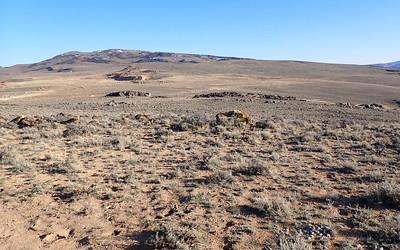BLM welcomes comment for proposed mineral exploration in Washoe County, Nev.
Organization:
BLM Office:
Media Contact:
ALTURAS, Calif. — The Bureau of Land Management today began a 30-day public comment period on a draft environmental analysis for the proposed expansion of gold exploration on approximately 200 acres of public lands at the site of the former Hog Ranch Mine in Washoe County, Nev. The comment period will end October 30, 2023.
The project, proposed by Hog Ranch Minerals Inc., would include improved, permanent and temporary access roads, drill pads, exploration drill holes, a staging area and a water well, mostly on the previously disturbed mine site. During the environmental analysis, the BLM will consider impacts to cultural and biological resources, including opportunities to minimize impacts to sensitive plant species and special status wildlife species.
“The BLM has been fully engaged with cooperators, including the Nevada Department of Wildlife and the Nevada Sagebrush Ecosystem Technical Team, to make sure this proposed exploration meets the highest level of environmental protection,” said BLM Applegate Field Office Manager Craig Drake. “We look forward to hearing from the public on our work as we consider appropriate mitigation measures for this project.”
Comments can be emailed to [email protected] (preferred) or mailed to ATTN: Craig Drake, Surprise Field Station BLM, 602 Cressler Street, Cedarville, CA 96104. Please add “Hog Ranch Exploration Project” in the subject line.
Maps and additional information about the project are available at the BLM NEPA Register, or by calling the BLM Surprise Field Station at 530-279-6101.
The BLM manages about 245 million acres of public land located primarily in 12 western states, including Alaska, on behalf of the American people. The BLM also administers 700 million acres of sub-surface mineral estate throughout the nation. Our mission is to sustain the health, diversity, and productivity of America’s public lands for the use and enjoyment of present and future generations.

